| FEATURED
By the VOMB squad
As 2022 comes to a close and we ponder the books that penetrated the soul this year, who better to ask about the nature of the written word than Frank Zappa? It was Zappa, after all, who made the most profound observation about books. “So many books,” he once said, “so little time.”
Zappa said a lot of other things, too, things about the nature of yellow snow and whatnot. But he’s absolutely on the nose about books. So many of them. Not enough time.
As is our annual end-of-the-year tradition, we asked a handful of Voices of Monterey Bay readers and friends for quick reviews of the books that sustained them in 2022. Which reminds us: Zappa wasn’t the only one with deep thoughts about books. It was Groucho Marx who observed that “outside of a dog, a book is man’s best friend. Inside of a dog, it’s too dark to read.” In any case, the following are a handful of great books, reviewed this year by some great people:
Enlarge
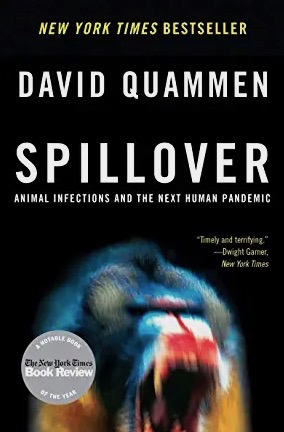
Spillover
David Quammen
W.W. Norton & Company, 2012
It’s a strange feeling when you pick up a random nonfiction book published a decade ago and realize upon reading it just how prescient it was. Spillover is about the crossover of animal viruses to humans; it basically predicts the COVID-19 pandemic.
We all know now that COVID began as a virus in wild animals — probably first bats, then gaining a foothold in other animals — and migrated to people. But science writer David Quammen details the many other instances of viruses jumping across species to wreak havoc: Ebola, SARS, AIDS and others just as virulent, but less well known.
These zoonotic diseases are becoming more common as humans encroach on animal habitats, and we are able to travel faster and further thanks to modern transportation, thus allowing us to spread new germs around the world. After reading the book, it was apparent that COVID was inevitable — it’s just remarkable that a worldwide pandemic had not happened sooner than it did.
Quammen takes the reader to many different countries and places, following disease scientists and others studying animal viruses and their spread. He recounts the history of virology, examining other diseases that made the jump from animals, like rabies, West Nile and influenza, and explains how viruses can mutate in different hosts before the “spillover” to humans. Once human-to-human transmission occurs, diseases become much more difficult to stop.
This is a subject that is both fascinating and frightening, and Spillover is worth reading to get a better grasp on the issues involved in just how these diseases spread and the difficulties involved in tracking their sources. A must-read for science geeks or anyone who wants to know more about what might be the next big contagion.
— Kathryn McKenzie
Enlarge
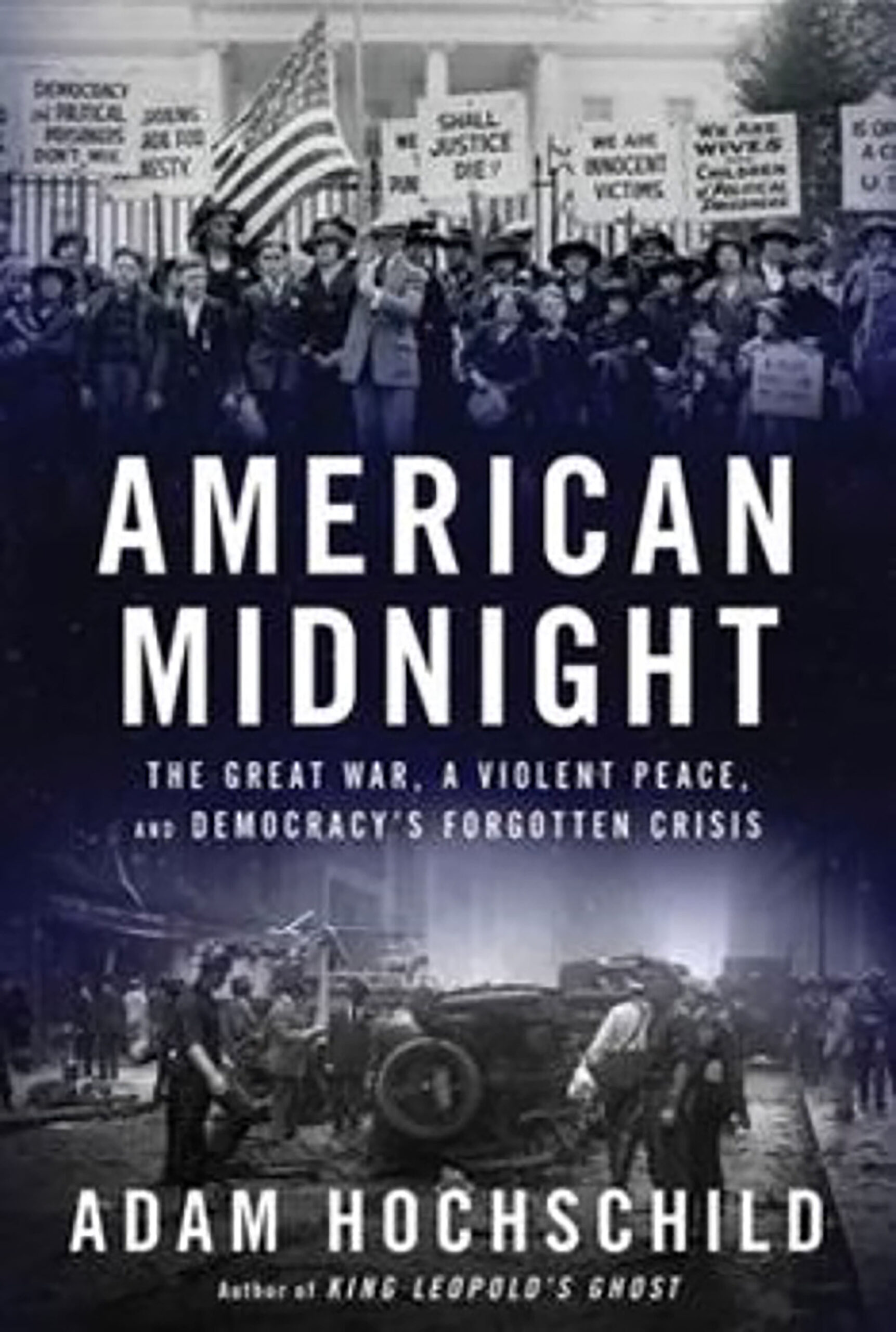
American Midnight: The Great War, A Violent Peace, And Democracy’s Forgotten Crisis
Adam Hochschild
Mariner Books 2022
Last year, I reviewed Adam Hochschild’s Rebel Cinderella which profiled the life of immigrant activist Rose Pastor Stokes. With American Midnight, Hochschild has crafted another powerful and well-researched history of the United States from 1917-1921. His capture of attacks on U.S. democracy a hundred years ago are indeed timely today.
American Midnight pivots from the presidency of Woodrow Wilson and the U.S. entry into World War I to the simultaneous domestic war against immigrants, Blacks, and workers. In fact, Wilson’s Administration used the passage of the Espionage and Sedition Acts to “protect” Americans from “anti-war radicals” and then as a tool to mount unprecedented domestic attacks.
Prominent players include Attorney General A. Mitchell Palmer, his assistant, J. Edgar Hoover, and Postmaster General Albert Burleson who used his authority under the Espionage Act to shut down over 75 newspaper and magazine publications that featured any commentary or reporting with which he disagreed. His abuse of power resulted in a total usurpation of the First Amendment and a denial of due process.
Attorney General Palmer formed the American Protective League (APL), which deputized over 250,000 white men who could arrest anyone they suspected of being “anti-American”. During this period, the lynching of Black Men, attacks on union halls including those of the Industrial Workers of the World (Wobblies), and raids on immigrant communities were commonplace.
This era also saw the establishment of the first domestic surveillance by the federal government and the use of water boarding called the “water cure” to force confessions.
Hochschild also profiles many of the leaders on the left who were the victims of these extrajudicial attacks, interrogations, jailings, lynchings and killings: Eugene Debs, Emma Goldman, Dr. Marie Equi, and Kate Richard O’Hare were all imprisoned for the content of their speeches. W.E.B. Dubois and Ida Wells protested the killings of hundreds of Black Americans, including uniformed war veterans, who were victims of white mob violence carried out with impunity.
The Russian Revolution and the Bolshevik victory in 1917 further incited Wilson and his domestic military and militias to attack the U.S. Socialist Party and the American Labor Movement, which were considered threats to big business.
American Midnight shares chilling descriptions of the victimization of many Americans and the wholesale assault on constitutional and democratic rights in the name of patriotism and the war effort.
With the publication of American Midnight, Adam Hochschild affirms his place as one of the most skilled researchers and story tellers of our national history. American Midnight should be required reading for anyone concerned about threats to our democracy in the current era.
— California Sen. Bill Monning (Ret.)
Enlarge
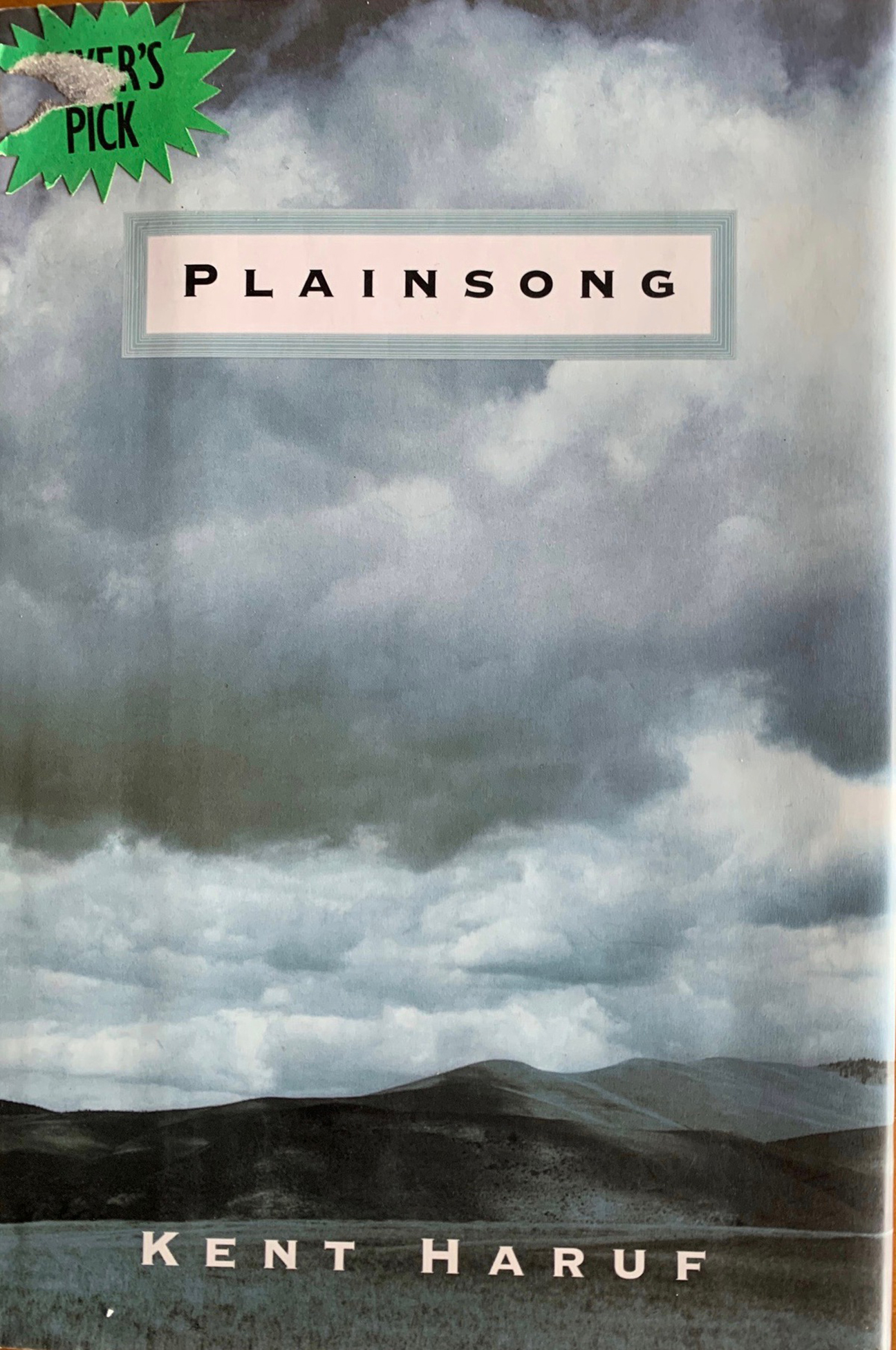
Plainsong
Kent Haruf
Published by Alfred A. Knopf, 1999
I was delighted when the New York Times published a page one obituary for author Kent Haruf. That’s because I feared my great admiration for his novel Plainsong was a sign that my taste in literature might be suspect. Though it details both the highs and lows of life in a Colorado flatlands town sometime in the past century, I found it as uplifting as some people find Hallmark movies.
The review freed me to start buying every thrift store copy of the book I could find and to distribute them to friends. I have three copies on my shelf now.
Before the review, I suspected Haruf was merely an obscure professor of writing at an obscure Midwestern college. Haruf, who died in 2014, was that and so much more. Though his prose is extremely spare, a series of unadorned declarative sentences with an occasional clause at the end of a thought or observation, it demonstrates his tremendous eye for detail and his deep understanding of the human condition. Of life.
True, the main plot does sound like a Hallmark work but there is nothing mawkish about his telling. An unmarried and pregnant high school girl has nowhere to turn after being shunned by her mother. A caring teacher finds unlikely refuge for her in the home of two old bachelor farmers unfamiliar with any aspect of her life. They actually don’t know much about anything except each other, cows and the weather there on the plains.
A trip to town with the girl:
They set out in the bright cold day, riding in the pickup, the girl seated between them with a blanket over her lap with the old papers and sales receipts and fencing pliers and the hot wire testers and the dirty coffee mugs all sliding back and forth across the dashboard whenever they made any sharp turn, driving north toward Holt, passing through town and beneath the new water tower and carrying on north, the country flat and whitepatched with snow and the wheat stubble and the cornstalks sticking up blackly out of the frozen ground and the winter wheat showing in the fall-planted fields as green as jewelry.
Almost every other sentence is much shorter. Most of them display Haruf’s command of elegant simplicity and his understanding of the way people are and the way they should be.
— Royal Calkins
Enlarge
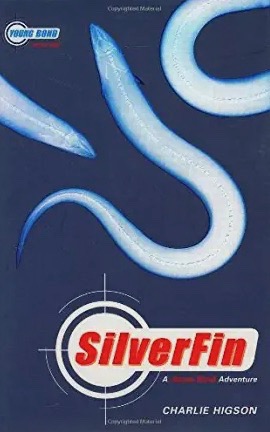
SilverFin: A James Bond Adventure
Charlie Higson
Miramax Books, 2005
Imagine my excitement when I grabbed SilverFin: A James Bond Adventure from a little free library. I didn’t recognize the author: Higson. After Ian Fleming, other writers took over the mantle, including John Gardner and Jeffery Deaver. Imagine my surprise when I looked at the bottom of the spine and saw the words “Young Bond: Book 1”.
For the longest time I took an elitist view of the Fleming franchise: If Ian Fleming did not write it, it didn’t deserve my time. I have read all the Fleming Bond titles but was hungry for new bond adventures. I eventually dismounted my high horse and began reading Bond titles by other authors. If they were not backed by Ian Fleming Ltd. Then the works were nothing but glorified fan fiction. SilverFin, written by Charlie Higson, has the blessing from the Ian Fleming Estate and that is good enough for me.
Higson has big shoes to fill for shaping the James Bond character in such a way that Bond’s later exploits have credibility. This book is geared to the young adult market and the reader is introduced to Bond as an adolescent. Higson does not pander to atypical Bond traits or characteristics. Bond is an average and normal 13-year-old. Bond is sent to Eton, a boarding school, and he has to deal with problems other kids his age are wrestling with. He makes a few friends but an enemy as well, a bully named George Hellbore.
Bond is still young, and his adult characteristics are not fully formed yet. He does not know what he wants to be when he grows up. When interacting with other students he is awkward and uncertain. The first part of the book reads like any other YA book. Bond is just a teenage boy trying to do the best he can in a new environment.
Then the story and tone shift.
Bond spends his vacation visiting his aunt and uncle who both live near Loch Silverfin in Scotland. George Hellbore’s father has a castle on the edge of the Loch. Strange things are happening at the castle, so Bond enlists a friend to help investigate. This is where Bond shows his mettle allowing the reader a glimpse on how the world’s best known fictional spy starts to become the James Bond readers are familiar with.
I enjoyed SilverFin more than anticipated. This is a must read for die-hard Bond fans.
— Clark Coleman
Enlarge
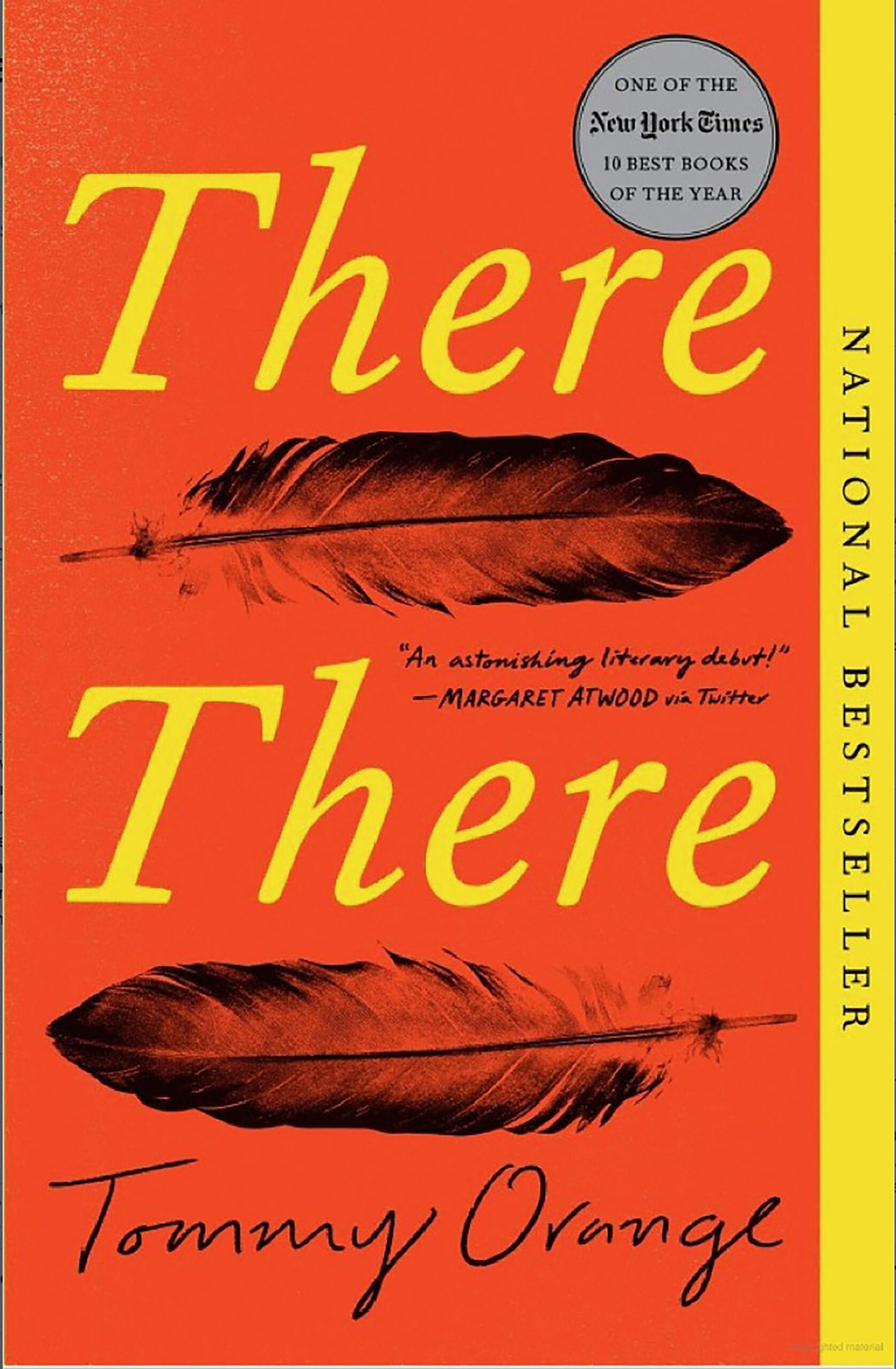
There There
Tommy Orange
Knopf, 2018
I can’t explain my recent fascination in Native American fiction, except that reservations seem to be cranking out some of the more thoughtful and imaginative young creative talents in recent years. It’s where all the interesting stuff is coming from.
We know of and appreciate Sherman Alexie, N. Scott Momaday and Louise Erdich, the pioneers of popular Indian fiction, but the new voices are turning the art of storytelling upside down.
Perhaps the best writer in America today is Sterlin Harjo, the originator of “Reservation Dogs,” a stirring Hulu series that has been renewed for a third season. The fourth episode of the second season, “Mabel,” co-written by Harjo and Kawennáhere Devery Jacobs, deserves all the prizes.
But Harjo writes teleplays and not books, so that brings me to Tommy Orange, the young Oakland writer who hit the ground running with There There, an astonishing first novel that won a National Book Award and was a finalist for a Pulitzer after its release in 2018.
There There, a title based on the Gertrude Stein description of Oakland, is set in the East Bay community as Indians from throughout the U.S. gather at the Oakland Coliseum for a huge powwow. It follows 12 characters in their journey to the Coliseum; each of them are dealing with recovery, their identities, the dislocation and the bittersweet beauty of their native history.
The powwow is meant as a communal and celebratory purification, and each character arrives with expectations formed of their distinct experiences. They come to Oakland from the far corners of the Indian experience — and from the elusiveness of an American dream never designed for them.
Orange purposely telegraphs the novel’s shattering climax early, but it’s still shocking to read. As Orange points out, “Most of all travel is about leaving and coming home.”
— Joe Livernois
Enlarge
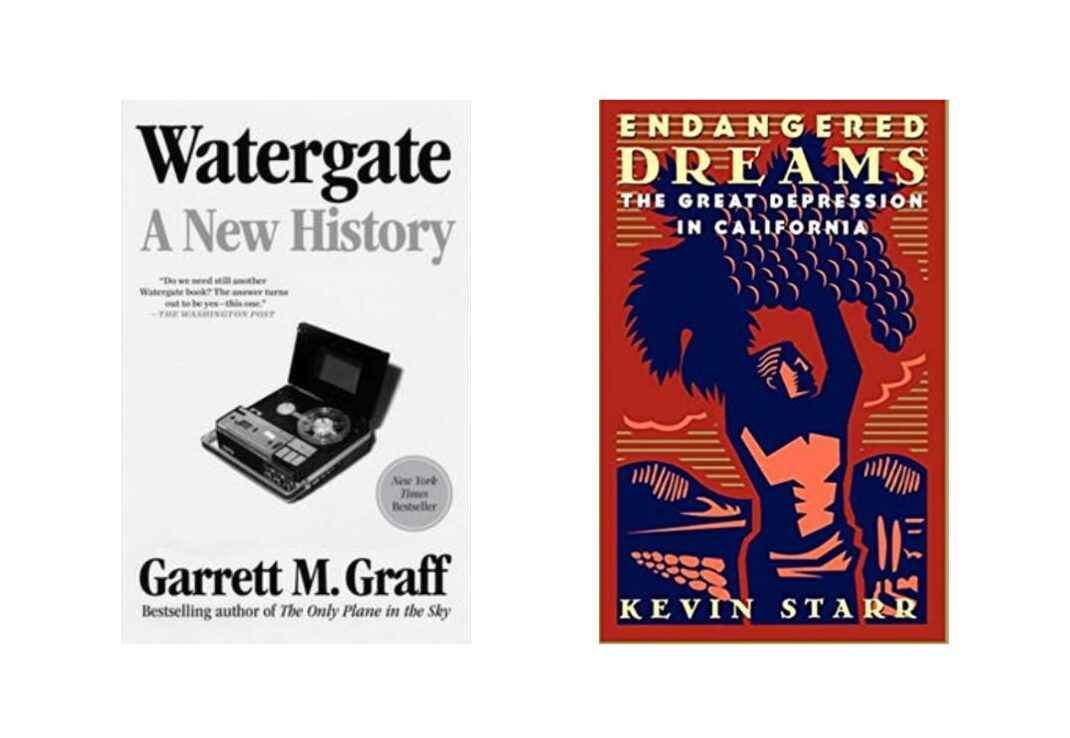
Watergate — A New History
Garrett Graff
Avid Reader Press / Simon & Schuster, 2022
&
Endangered Dreams — The Great Depression in California
Kevin Starr
Oxford University Press, 1996
All told, 2022 was a personal banner year for books. I read scads and not one clunker. Novels, essay collections, histories, biographies. Not a bad one. I take care in choosing a book. At 71, time seems extra precious, and I refuse to expend any minutes on wasteful words.
As the best of the bunch, I’m torn between two works of non-fiction: Watergate — A New History by Garrett Graff, and Endangered Dreams — The Great Depression in California by Kevin Starr.
The Watergate book is well-written, compelling even for a seasoned Watergate buff like myself, and replete with new information based on recent reportage. It is the essential history.
As a native Californian who was far too ignorant of the state’s rich history, I’ll have to go with the book about the social struggles and triumphs in the state during the 1930s. I went on to read three more of Starr’s sterling California histories covering the 1920s and World War II years.
But Endangered Dreams made the biggest impact. Polarized politics, pitched labor battles, fascist militias, cutting-edge art, mammoth public works, outsized personalities, exquisite details — this is a feast of facts about our home state prepared with the finest five-star writing.
— Larry Parsons
Enlarge

Jaimes Sabines, Apuntes biográficos Audiolibro
Pila Jiménez Trejo
Tusquets México, 2014
Alfredo, mi esposo, siempre ha sido un buen lector. Desde que llegamos a este Valle de Salinas, en enero de 2011, ya jubilado, pasaba los días leyendo y escuchando su buena música. Pero en 2017 fue diagnosticado con la enfermedad Degeneración Macular Asociada con la Edad. Con esta enfermedad, con el tiempo, se va dificultando ver, leer. Pero Alfredo descubrió los audiolibros.
En un año particularmente rico en la producción de audiolibros en español como lo ha sido 2022, Jaime Sabines, Apuntes biográficos, de Pilar Jiménez Trejo, merece una mención especial por su aportación histórica, su interés intrínseco y una amenidad sin límites.
Editado por primera vez en Tuxtla Gutiérrez, Chiapas en 2012, en febrero de 2022 saludamos entusiasmados su aparición como audiolibro porque estos testimonios retomaron el carácter oral con el que fueron concebidos.
Pilar Jiménez Trejo, renombrada periodista cultural que, entre otros cargos importantes, ha desempeñado el de corresponsal de los periódicos mexicanos El Universal y Reforma en China, Singapur y Dinamarca, entrevistó a Sabines asiduamente durante diez años.
Tras el surgimiento de una amistad que tuvo los matices de una relación padre-hija, Pilar lo dejó hablar libremente y se concentró en registrar las palabras del poeta chiapaneco de origen libanés (1926-1999) que desde la segunda mitad del siglo XX ha gozado de una popularidad similar a la obtenida en su tiempo por Amado Nervo (1870-1919).
En el epígrafe, la autora cita a Rabindranath Tagore (1861-1941): “Cuando mi voz calle con la muerte, mi corazón te seguirá hablando”. Palabras premonitorias estas puesto que así nos llega la voz cautivadora de Sabines, recreada durante 12 horas y 6 minutos por Felipe González.
Al final de cada capítulo de los relatos de Sabines quedamos tan interesados por la continuación como le sucedía al maniático intrigado la continuación de los cuentos de Schehrazada en “Las mil y una noches”, joya de la narrativa universal tan amada por el poeta chiapaneco.
A Shahrazada, los relatos le salvaron la vida. A los oyentes de este audiolibro nos enriquecerá y acrecentará nuestra admiración por Sabines.
Los audiolibros no solo son para aquellas personas que tienen dificultad de ver y que les gusta la literatura, sino también para toda aquella persona dispuesta a disfrutar de un buen libro en la voz cautivadora del artista — a veces, el mismo autor. Alfredo me enseñó que los audiolibros ofrecen un nuevo mundo para disfrutar de la lectura, una de las muchas enseñanzas de tan buen maestro.
— Josefina Cabrera Moreno
Enlarge
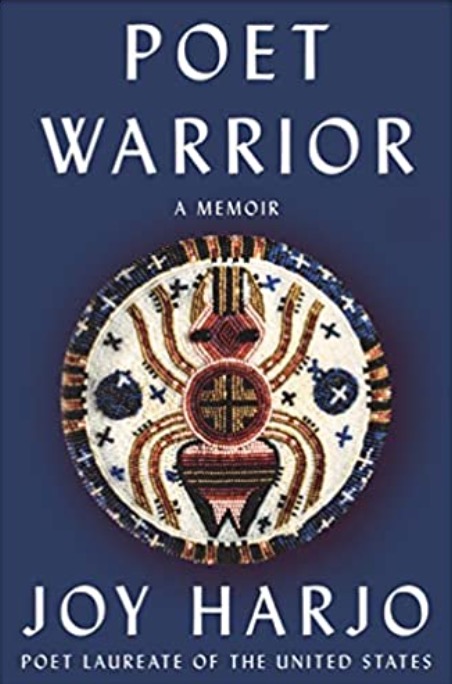
Poet Warrior: A memoir
Joy Harjo
W. W. Norton & Company, 2021
Although I’ve been writing poetry on-and-off for a couple of decades, I never consider myself a poet until this year. The reasons behind the transformation are a bit complex to explore in a 400-word book review, but one of them is tied to Joy Harjo’s memoir, Poet Warrior.
Harjo, the first Native U.S. poet laureate in the history of the position, paints a powerful portrait of the importance of poetry and storytelling in the life of her people, the Mvskoke (Creek), and other Native groups. How the language of poetry lends itself to more accurate descriptions of their struggle. It’s whimsical, sobering, full of wisdom and resolve to continue with the traditions her ancestors have struggled for centuries to preserve. In spite of all odds.
The book begins with a nine-line paragraph: To imagine the spirit of poetry is much like imagining the shape and size of the knowing. It is a kind of resurrection light; it is the tall ancestor spirit who has been with me since the beginning, or a bear or a hummingbird. Here, Harjo is comparing poetry to knowledge, a vast ocean of ideas that can be expressed rhythmically, a container so expansive that has room for everything. It’s also an invocation of the spirit world in the shape of bears and hummingbirds, a connection that infuses much of her writing and makes its presence known throughout the book.
Her knowing is that of herself, her family, her people, the world. This knowing allows for some kind of peace, the type that is hard earned, a roadmap for recovery from trauma, alcoholism and other burdensome experiences not just reserved for Natives, but for many people of limited means.
So she offers a remedy: At some point we have to understand that we do not need to carry a story that is unbearable. We can observe the story, which is mental; feel the story, which is physical; let the story go, which is emotional; then forgive the story, which is spiritual, after which we use the material of it to build a house of knowledge.
Harjo talks to her ancestors, to herself, to the spirit world, and transforms what can be elucidated to be a painful reality into one of magic and wonder, of survival and hope. Indeed, railing against the injustices of the world can be bothersome for some, talking about pain off-putting. But a poem will bring you in, like honey will a fly, so you can get swatted by the power of the ideas. Prepared to be side swept.
— Claudia Meléndez Salinas
Enlarge
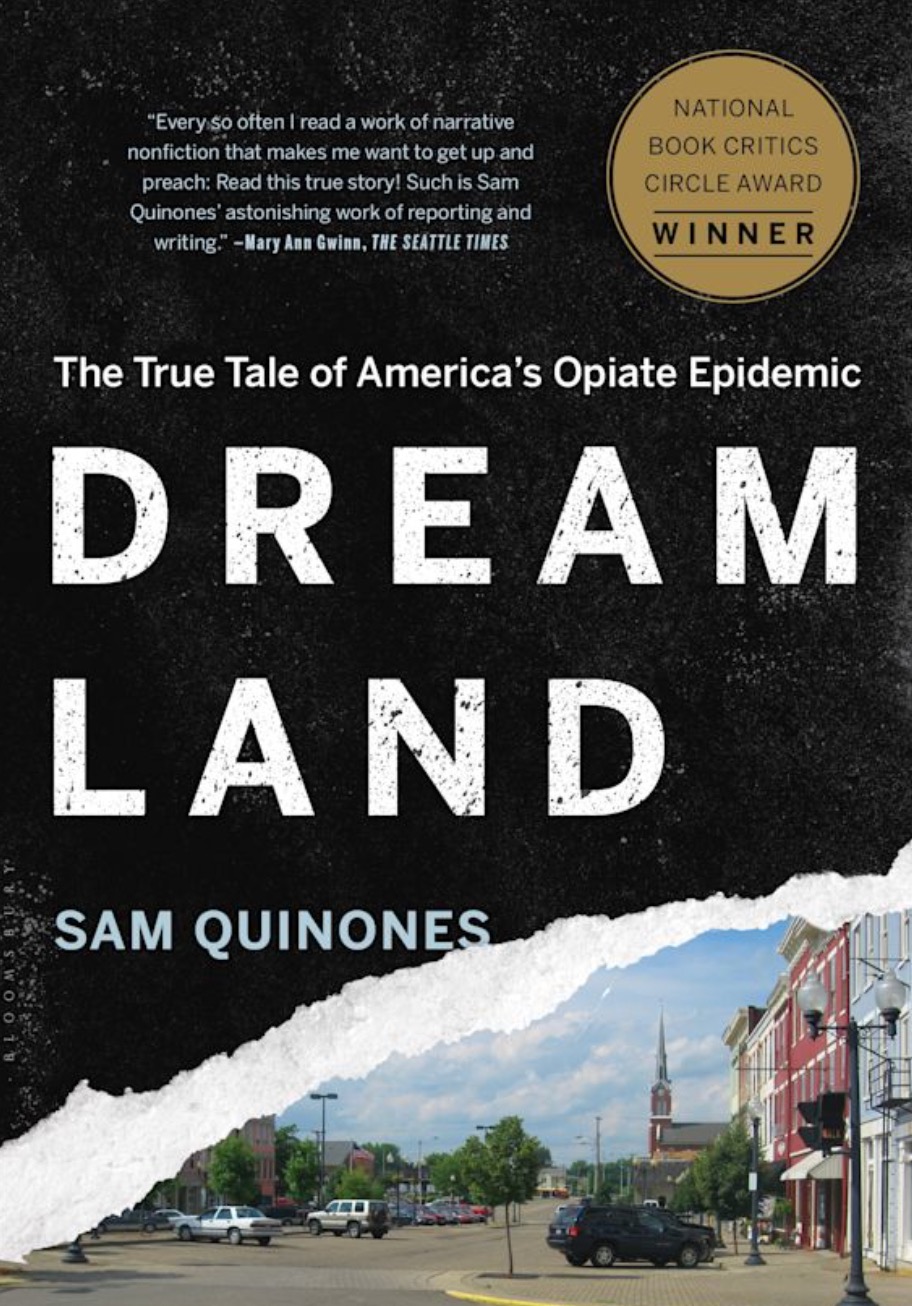
Dreamland: The True Tale of America’s Opiate Epidemic
Sam Quinones
Bloomsbury Publishing, 2016
I have always been fascinated with drugs (look away, current and prospective employers).
For many years, I thought of drugs as the ultimate taboo. Perhaps that’s because my parents told me early and often not to do drugs. And they would say it with so much conviction. “Ni te atrevas a pensarlo.”
As a teen, I thought it was funny that they felt so compelled to talk to me about drugs because I was, by all accounts, a deeply nerdy kid. Yet drugs have been a serious problem in Monterey County.
And it’s a problem that has only worsened since my teen years. While the nation has grappled with an opiate crisis for many years, it has never felt as present locally as it did this year.
In August, Montage Health released a press release warning that “fatal overdoses from opioids have increased eightfold since 2018.” School groups responded by hosting several town halls to warn parents and teens of the dangers of Fentanyl, a synthetic opioid. For their part, community-based organizations mobilized to increase the distribution of Narcan, a life-saving nasal spray that can reverse the effect of opioid overdose. Thanks to their efforts, Narcan can now be found at select farmer’s markets throughout Monterey County.
For those interested in learning more about how we got here (and for those who, like me, are simply fascinated by drugs), Dreamland: The True Tale of America’s Opiate Epidemic by Sam Quinones does a great job historicizing our current crisis.
Big problems have many angles and Dreamland’s greatest accomplishment is highlighting the nuances of a story that is often reduced to people’s moral shortcomings.
In his now infamous visit to the 2011 Iowa State Fair, Mitt Romney drew the ire of political opponents by saying that “corporations are people.” If Romney attempted to humanize organizations, Quinones does the opposite and reminds readers that the American healthcare system is too often susceptible to profit at the expense of people’s lives.
Dreamland often focuses on the perfect storm of reduced patient-physician consultation time, the advent of pharmaceutical advertising, and physician bonuses that enabled rampant opioid prescription and eventual client dependence. Quinones’s commitment to avoiding cliches extends to the Mexican immigrants credited with expanding opioid networks to America’s suburbs. “Their story was about immigration and what moves a poor Mexican to migrate as much as it was a tale of drug trafficking,” writes Quinones.
With several profiles of individuals who became dependent on opiates, Quinones challenges the notion of the “dope fiend” stereotype so that readers see how anyone, even nerdy kids from the Salinas Valley, can develop opioid dependence and overdose.
— Eric Mora
Have something to say about this story? Send us a letter.